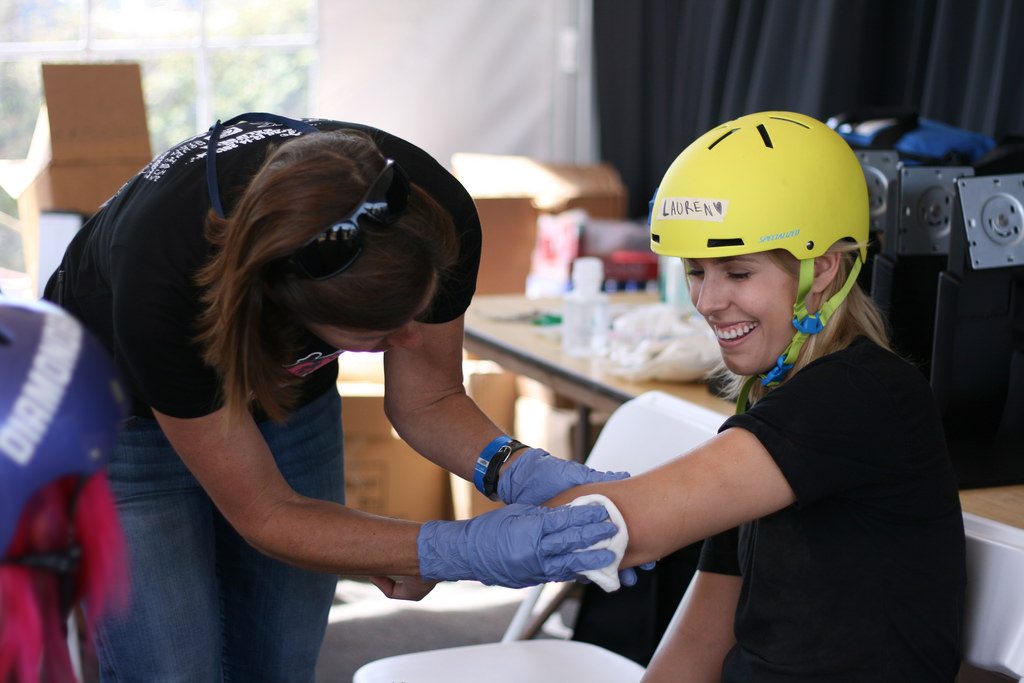
How To Deal With an Injury in the Backcountry
Hiking in the backcountry can be an exciting adventure, but it doesn’t come without risk. Far away from any help or emergency services, if an injury occurs, you’ll need to know how to handle it by yourself until help can come or until you get back home. Even if you’re not a doctor, you’ll be surprised how much an ordinary human can do to help themselves or another person in the wilderness. If you happen to find yourself in a scary situation, here’s how to manage.
Bring a First-Aid Kit:
To be prepared for any injury that may occur on the trail, it’s essential to bring along a reliable first-aid kit. There are a lot of first-aid kits available on the market, or you can choose to make one yourself. However, a first-aid kit really isn’t of much use unless you know what to do with the objects inside of it. Most first-aid kits have labels and some directions inside, but make sure you’re comfortable with finding and opening things inside of it in case you need to use them quickly. An outdoor safety course never hurt anyone.

Try to Prevent Injuries as Much as Possible:
The best way to deal with an injury in the backcountry is trying to prevent one from happening at all costs. Preventing an injury involves everything from wearing comfortable and supportive shoes, to traveling lightweight, taking breaks often, and protecting yourself from extreme weather conditions. While some injuries can be inevitable, try your best to take your time and be safe while on the trail.
Evaluate the Injury:
Before you or a friend administers any first-aid, you must evaluate the injury. Is this just a blister, or is it something more serious? Is the person’s injury life-threatening, or easily fixed? You should be able to determine this right away, so that you can figure out the next step. In most cases, you should be able to fix it up on your own. However, sometimes an injury might require immediate intervention by emergency services. If you’re far out in the backcountry, it might be a while before help can arrive. Do your best to manage the injury until then.

Know How To Heal Common Injuries:
If the injury is a quick-fix, then that’s very good news. That is of course if you know how to fix it. Luckily, with your first-aid kit handy and a little brains, nothing should be too difficult.
Cuts and wounds: If you are helping someone else, remember first to wear gloves. Apply pressure to the affected area. Keep elevated, and wait until bleeding stops or control the bleeding as best as possible. Place a gauze on the wound, without cutting off circulation (unless it is necessary to make a tourniquet, in which case would be a more serious injury). Once bleeding stops, flush with water (also known as “irrigating the wound”). Apply antibiotic ointment, cover the wound, and clean and check each day until it starts to fully heal.
Burns: Immediately soak the burn in cold water. Cover the burn with antibiotic ointment (found in your first-aid kit!). Cover with a gauze, and depending on where the burn is, keep the area elevated. In the meantime, take an ibuprofen, and stay hydrated.
A sprained ankle or twisted knee: If you are able to still move the joint, then rest it, apply ice, compress, and elevate. To remember this, just remember the acronym “R.I.C.E.”
A broken bone or torn ligament: In the best case scenario, a fracture can be extremely painful but manageable until the injured person completes the hike. You can improvise a splint, using a trekking pole or a solid, thin object to keep the area straight and restrict movement.
Blisters: Blisters are probably the most annoying, yet most common injury among hikers. If you find yourself with a blister (or five), there are luckily many ways to deal with it and be on your way. The first thing to do is drain the blister. When it’s mostly drained, treat it like a regular wound, by cleaning the area and covering it. Wrap it, and pray that it doesn’t hurt anymore once you continue hiking.

Don’t Panic:
If a bad injury occurs, don’t panic. Mind over matter is an important thing to remember, and it’s essential that you stay calm. If you’re able to, get yourself or the injured person to some shelter to prevent other injuries or illnesses from occurring. If you are with someone who is injured, try to calm them down by talking to them and reminding them to take deep breaths.
Take Care Afterwards:
If you get an injury on the trail, you might not be able to handle it as properly as you should. Once you get home, continue to clean or take care of the injury and visit a doctor if needed. Don’t wait. Make sure to keep an eye on it until it’s completely healed, and check for signs of infection.
Now, if you or a friend have the misfortune of experiencing an injury on the trail, you’ll know how to deal with it.










